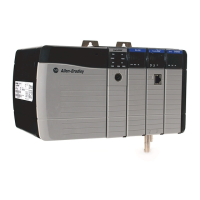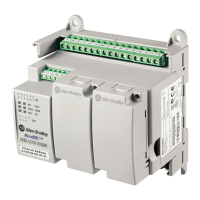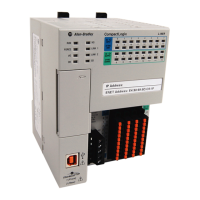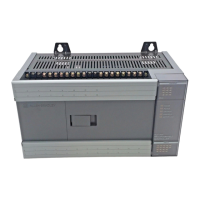Design a sequential function chart
42 Rockwell Automation Publication 1756-PM006I-EN-P - February 2018
Example
When the step is not on its last scan (conveyor_fwd.LS = 0), this statement turns on conveyor_state. When
conveyor_state turns on, the conveyor turns on.
On the last scan of the step (conveyor_fwd.LS =1), this statement turns off conveyor_state. When
conveyor_state turns off, the conveyor turns off.
For an action that uses one of the stored qualifiers, use the Q bit of the action to
condition your logic (see Use the programmatic reset option on page 41).
Example
When the action is not on its last scan (conveyor_start.Q =1), this statement turns on conveyor_state. When
conveyor_state turns on, the conveyor turns on.
On the last scan of the action (conveyor_start.Q =0), this statement turns off conveyor_state. When
conveyor_state turns off, the conveyor turns off.
You can also use a P0 Pulse (Falling Edge) action to clear data (see Use the
programmatic reset option on page 41). This example uses an action to turn on a
conveyor at the start of a step. A different action turns off the conveyor at the end
of the step.
Example
This action turns on the conveyor. When conveyor_state turns on, the conveyor turns on.
Before the SFC leaves the step, the P0 action turns off the conveyor. On the last scan of the step,
conveyor_state turns off. This turns off the conveyor.

